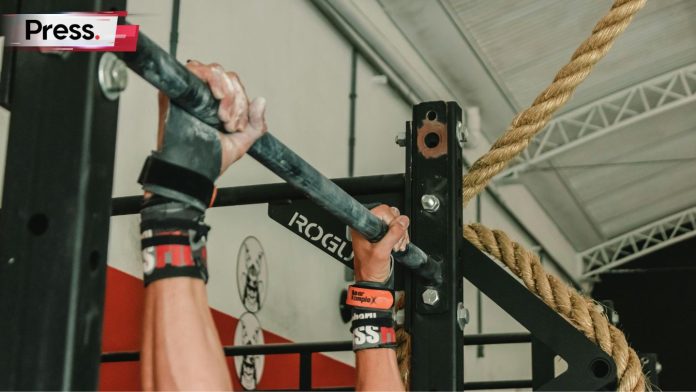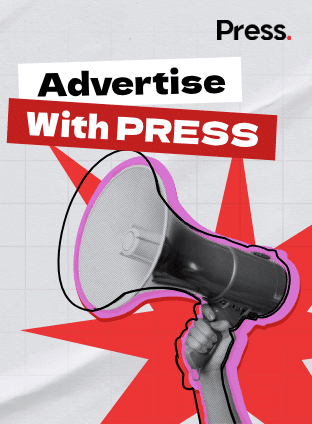Key Takeaway
- A muscle‑up combines a pull, transition, and dip into one fluid movement.
- Build capacity first (strict pulling/pressing), then layer explosiveness, core control, and grip skill.
- Treat benchmarks as guidelines (not rigid prerequisites). Once you own multiple sets of strict pull‑ups and controlled dips, begin transition drills.
- Train both bar and ring variations for balanced strength and coordination.
- Timelines vary: progress to a first rep can take weeks to several months, depending on baseline, practice frequency, and recovery.
- Common mistakes: poor grip choice, over‑swinging, early/late transition timing, and skipping warm‑up.
- Warm up shoulders, wrists, and scapular control each session; manage volume to keep elbows and shoulders happy.
Table of Contents
ToggleA muscle‑up is a hybrid pull‑up + dip that demands explosive pulling, smooth transition, and a strong press. Mastering it means blending power with precision.
What Makes Muscle‑Ups Challenging?
- Power requirement: You must pull your torso above the implement (bar/rings), not just bring your chin to the bar.
- Timing window: The transition (when the chest passes the implement and wrists roll over) is short; mistimed pulls stall here.
- Shoulder & wrist demands: The change from pull to press loads small stabilisers and the wrists, especially on rings.
Think of the muscle‑up as an upper‑body clean‑to‑press: build the pull, then learn to “catch and drive.”
Preparing Your Body
Minimum Strength Benchmarks
Use these to gauge readiness, not as hard rules. When these feel strong and repeatable, start transition practice.
- Strict Pull‑Ups: 3×5 smooth, full‑range reps
- Straight‑Bar Dips (or Parallel‑Bar Dips): stable shoulders, controlled depth
- Hanging Leg Raises: 10–15 reps with braced core
- Explosive Pull‑Ups: chest‑to‑bar height for a few reps
Key Areas to Condition
- Shoulders & Scapulae: scapular pull‑ups, banded external rotations, face pulls
- Core Control: hollow/arch holds, beat swings, tempo leg raises
- Grip: ring false grip practice (for rings), thick‑bar/towel hangs, bar “hook” strength
Quick Warm‑Up (5–10 min): light cardio → dynamic shoulder/lat work → wrist circles → 1–2 sets scapular pull‑ups and band pull‑aparts.
Pro tip: A short, targeted warm‑up outperforms long static stretching here. Arrive warm, then activate.
Read more: Biceps Workout: Building Bigger, Stronger Arms
Technique: Bar vs. Rings
Bar Muscle‑Up (BMU): Step‑by‑Step
- Grip & Setup
- Use a secure overhand grip with thumbs around the bar. Set a tight hollow body.
- Explosive Pull
- Drive elbows down and back; aim chest to bar or higher. Keep ribs down.
- Late Transition
- As you reach maximal height, keep pulling a split‑second longer, then roll the wrists over and bring the torso over the bar.
- Dip & Lockout
- Switch to a press: push down on the bar until elbows are fully extended. Control the descent.
Common BMU Cues
- “Pull higher, transition later.”
- “Bar to lower sternum, then lean over.”
- “Thumbs around = safer, stronger.”
Ring Muscle‑Up (RMU): Step‑by‑Step
- Grip & Setup
- Use a false grip (meaty part of palm/wrist on top of ring). Rings at shoulder width; hollow body.
- Explosive Pull
- Pull the rings to the chest/upper abs. Keep rings close; avoid letting them drift wide.
- Transition
- Lean chest forward and rotate wrists over while keeping rings tight to the body.
- Dip & Lockout
- Press to support. Keep rings close until lockout, then stabilise.
Bar vs. Rings, Which Is Easier?
Many athletes find the strict bar muscle‑up tougher than the strict ring version because you must navigate a fixed bar and clear the front edge, while ring muscle‑ups demand more shoulder stability. Train both to develop power and control.
Progressions You Can Trust
Essential Drills (Anywhere)
- Explosive Pull‑Ups: aim chest‑to‑bar height
- Top‑End Dips: straight‑bar or ring dips; controlled tempo
- Slow Negatives (MU Eccentrics): start in support, lower through transition to hang
- Transition Drills: low rings or a bar set at chest height (e.g., Smith machine) to rehearse pull‑to‑press pattern
- Beat Swings / Hollow↔Arch: rhythm and shoulder prep (esp. for kipping BMU)
Gym‑Based Progression (4 Weeks)
Weeks 1–2 – Strength Base (3×/week)
- Pull‑ups 4×5–8 (tempo 2–1–X)
- Dips 4×5–8 (tempo 2–1–X)
- Hollow holds 3×20–30 s
- Accessory: scap pull‑ups 3×8–10; banded ER 3×12–15
Week 3 – Explosiveness (3×/week)
- Chest‑to‑bar pulls 6–8×2 (full recovery)
- Jumping MU (low bar/rings) 5×3
- Core: hanging leg raises 4×8–10
Week 4 – Transition & Control (3×/week)
- Band‑assisted BMU or RMU 6–8×1–2
- MU negatives 5×1 slow (5–7 s down)
- Dips (heavier or deeper) 4×5–6
Film a couple of sets weekly, angle the camera side‑on to check pull height and when you initiate the transition.
Outdoor / Park Progressions
- Kipping Pull‑Ups: use controlled swing; avoid wild over‑kipping
- Chest‑to‑Bar Pull‑Ups on fixed bars
- Jumping Muscle‑Ups from low bars or low rings
- False‑Grip Hangs (rings)
- Ring Rows & Ring Dips for shoulder stability
Humid mornings/evenings: chalk lightly and wipe bars/rings for grip consistency.
Troubleshooting Guide
Problem | Likely Cause | Quick Fix |
Can’t clear the bar/rings | Insufficient pull height | Prioritise chest‑to‑bar pulls; add singles with full rest |
Wrists stuck under the implement | Late/weak wrist roll; poor grip prep | Practice transitions on low bar/rings; false‑grip holds (rings) |
Wild swing/feet everywhere | Weak hollow body control | Hollow/arch drills; tempo beat swings |
Shoulder discomfort | Skipping warm‑up; limited mobility | 5–10 min warm‑up + banded ER; reduce volume; check range |
Gas out mid‑set | Too much volume; poor recovery | Add rest days; keep reps to crisp singles/doubles |
How Often Should You Train?
- 2–3 focused sessions/week work for most learners.
- Use low rep, high quality sets for explosive work and transitions.
- Keep at least 48 hours before heavy repeat efforts for elbows/shoulders.
Recovery Basics (High‑Impact for Skill Progress)
- Sleep: 7–8 hours when you can.
- Protein across the day: roughly 0.25–0.40 g/kg per meal, aiming for 1.4–2.0 g/kg/day overall. Whole foods are great; shakes are optional convenience.
- Hydration: more if you’re training in heat/humidity.
Equipment & Setup (Home & Gym)
Home:
- Pull‑Up Bar: Mount securely (doorframe bars must be fully locked; test with static hangs before dynamic work).
- Rings: Hang from a beam or rack; adjust so you can practice low transitions and dips.
- Bands & Chalk: Bands for assistance; chalk or liquid chalk for humidity.
Gym:
- Bar Height: Choose a bar that lets you hang freely without your feet scraping the floor.
- Ring Spacing: Set at shoulder width to start; bring slightly wider as stability improves.
- Floor Safety: Clear space beneath for missed reps; avoid slick flooring.
Check attachment points before every session, especially outdoors.
Injury Prevention & Red Flags
- Warm‑Up Non‑Negotiables: 5–10 minutes of pulse‑raising work + scapular activation + gentle wrist prep.
- Volume Control: Keep early MU work to crisp singles/doubles; stop if form breaks down.
- Shoulder Comfort Rules: No aggressive end‑range bouncing; progress depth in dips gradually.
- Elbow/Wrist Care: Mix neutral‑grip pulling (rings/neutral handles) and forearm eccentrics if tendons feel irritated.
- Red Flags: Sharp joint pain, night pain, or swelling that lingers >48 hours, scale back and consult a pro.
Mobility & Range‑of‑Motion Essentials
Quick self‑checks
- Overhead reach: Can you bring your arms overhead with your ribs down and your elbows straight? If not, prioritise lat/teres and T‑spine work.
- Thoracic extension: Lie on a foam roller at mid‑back; extend without flaring ribs. Stiffness here limits pull height and transition.
- Wrist extension: Aim for 90° pain‑free with fingers on the floor (hands/knees). Limited range makes dips and false‑grip transitions cranky.
Go‑to mobility (4–6 min pre‑session or 8–10 min on off days)
- Wall slides 2×8–10 (slow)
- PVC/strap shoulder CARs or controlled “dislocates” 2×8 (pain‑free range only)
- Foam‑roller T‑spine extensions 2×6–8 breaths
- Banded lat stretch 1–2×30–45 s/side
- Wrist rocks 2×10 (hands/knees), prayer stretch 2×20–30 s
Rule of thumb: Mobility should make the next set feel easier; if it makes you weaker or sore, you did too much or went too hard.
Programming & Progression: Assistance & Volume
Rep quality beats rep count. Build exposure without frying elbows/shoulders.
Assistance Ladder (choose 1–2 for 6–8 weeks, then progress)
- Low‑ring or chest‑height bar transitions → groove pull‑to‑press path.
- Jumping muscle‑ups → learn timing without max force.
- Band‑assisted MU (rings or bar) → start with a thicker band; progress to lighter.
- Spotter‑assisted singles (experienced coach/partner) → minimal touch.
Weekly structure ideas
- 2 days/wk (skill priority): Day 1 strength (pull‑ups/dips + transitions), Day 2 explosiveness (CTB pulls + assisted MU + negatives).
- 3 days/wk: Strength → Explosive → Transition/Control (as in the 4‑week plan), capping total MU attempts at 8–16 quality reps/week.
Progress markers
- CTB pulls to the lower sternum for doubles
- Dips to full lockout with tempo (2–1–X)
- MU negatives of 5–7 s without form collapse
Deload every 4–6 weeks: halve total attempts and swap in easier assistance.
Stop rules
- Grip slipping, shoulder pinch, or form breakdown = end the set.
- If speed drops >10–15% on explosive pulls, move to accessories.
Summary
A clean muscle‑up blends capacity (pull + press), timing (transition), and control (core + grip). Build strict strength, layer in explosive chest‑to‑bar pulls, and practice transitions on forgiving setups (low rings or a chest‑height bar). Keep reps quality‑focused, manage recovery, and film periodically to spot easy wins. Train both bar and ring variations to round out power and stability. Stay patient; let form, not the calendar, set your pace. Your first smooth rep is a function of consistent practice and smart progression. For more info, follow PR agency Malaysia.
Disclaimer: All of the content was thoroughly fact-checked and verified by our editorial team to ensure accuracy, clarity, and reliability.
FAQs About Muscle Up
Can beginners learn muscle‑ups?
Yes, start by building strict pull‑ups/dips and begin transition practice on low rings or a bar at chest height.
Bar or rings first?
Either path can work. Rings build stability and teach the false grip; bars teach clearance around a fixed implement and often require a higher pull. Train both.
Do muscle‑ups build muscle?
They challenge lats, chest, triceps, and shoulders while developing full‑chain coordination. Pair with progressive strength work for hypertrophy.
Can I learn at home?
With a sturdy bar (and ideally rings) plus a couple of bands, yes. Focus on strict strength, then explosive singles and transition drills.


